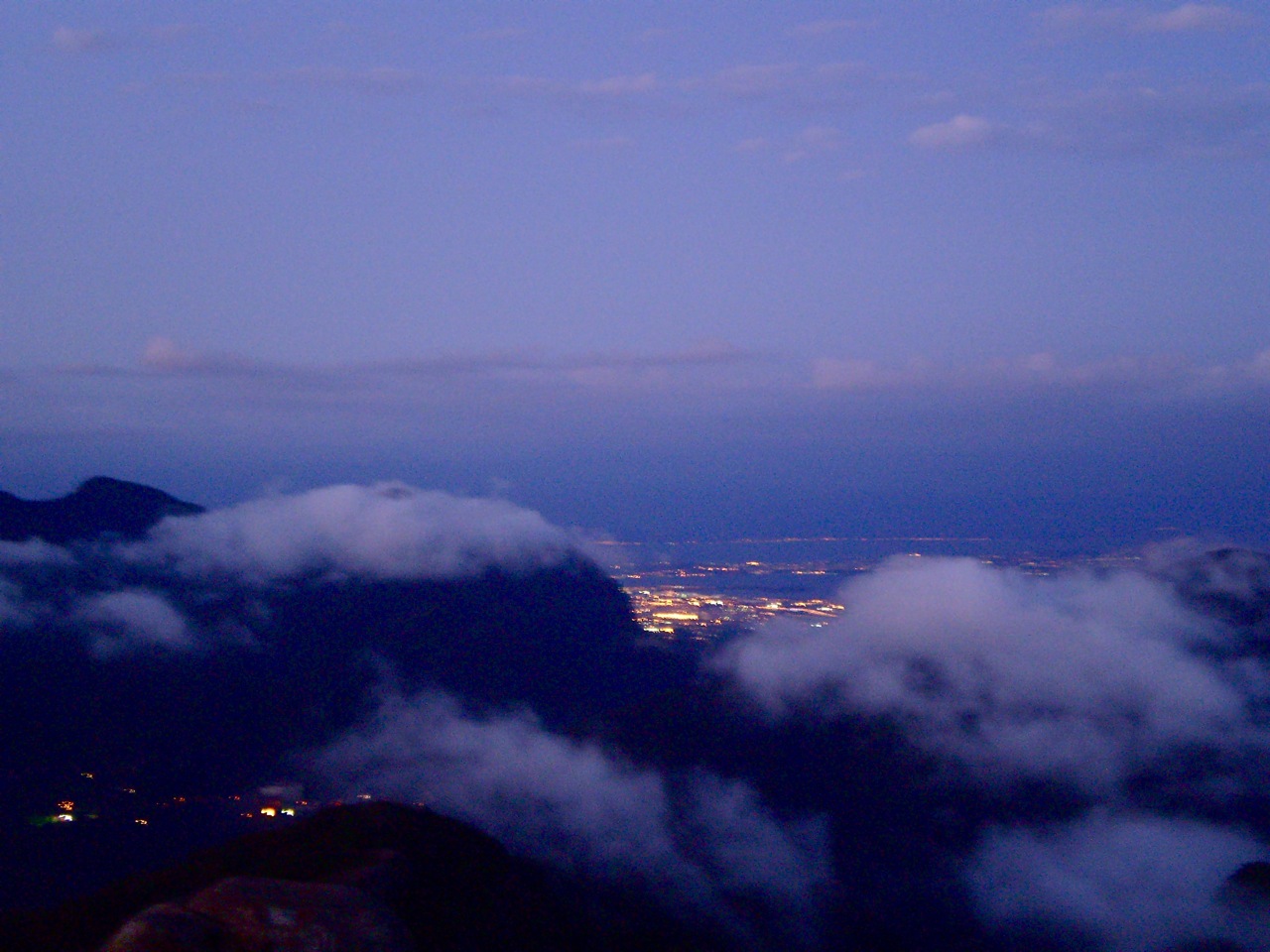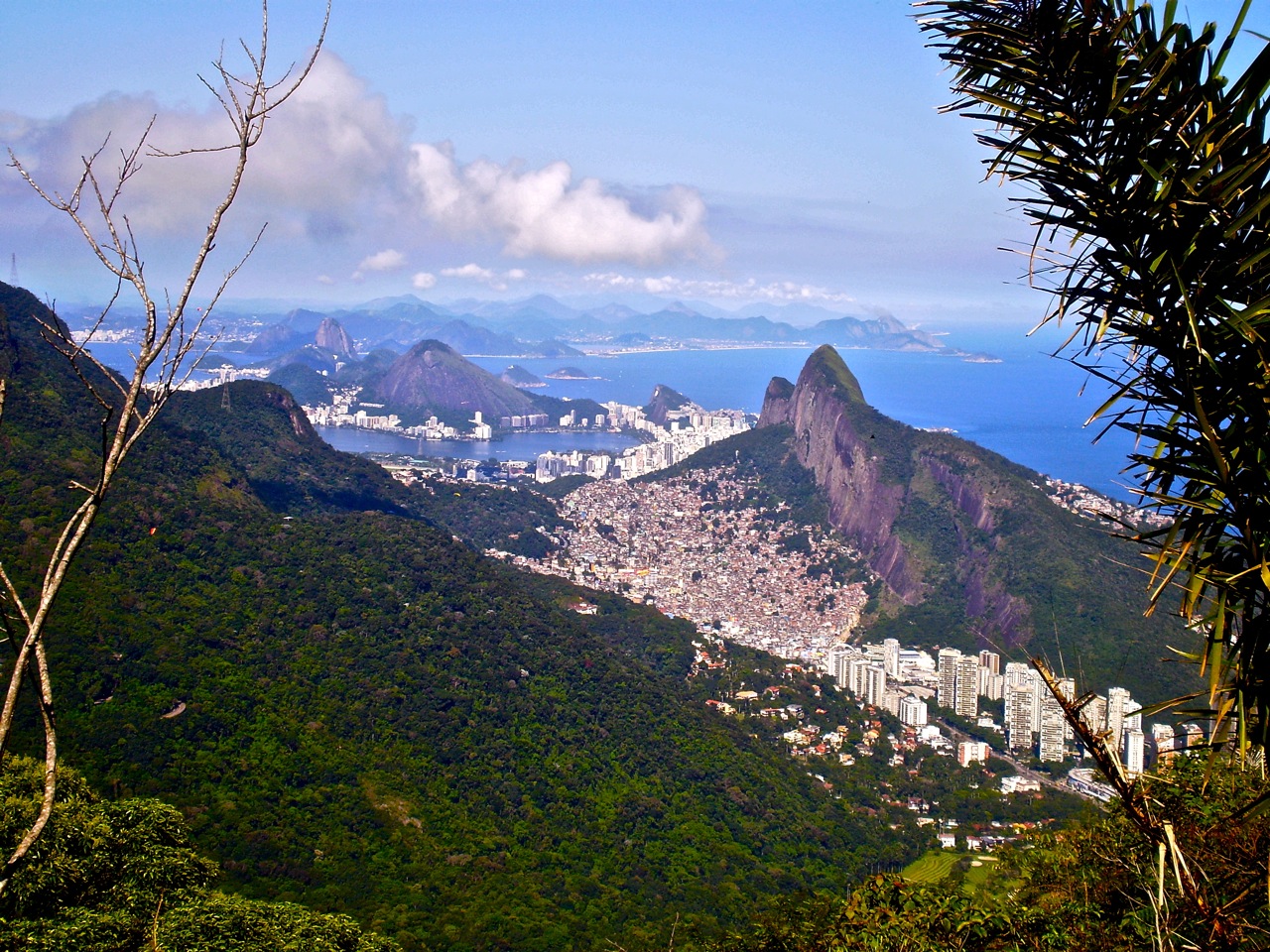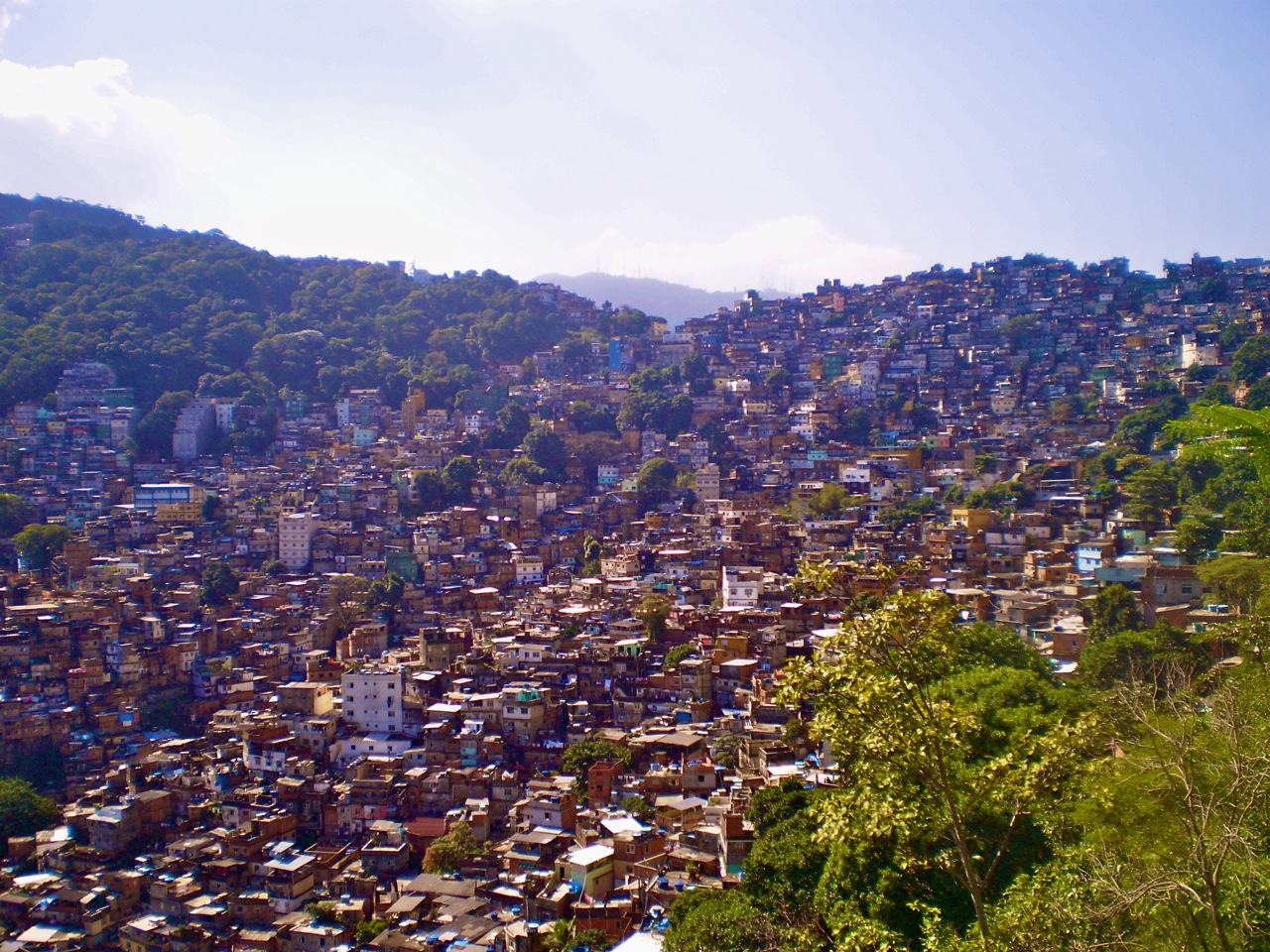All Quiet on the Southern Front
Suspense of Thanksgiving Weekend in Rio Eases

It was with apprehension that I set out from Rocinha early Saturday morning aiming to put the largest seaside monolith in the world in place of my, well, apprehension. I was apprehensive because Rio de Janeiro’s military police are currently cracking down on favela after favela in hopes of driving out their heavily armed drug traffickers’ makeshift illegal governance. The largest seaside monolith in the world is Pedra de Gávea, whose 842 steep meters of altitude promise a climb strenuous enough to distract even the most distraught mind.
So when I arrived on top after three hours of climbing and heard gunshots resonating from far north, I was relieved. Rocinha, which covers a part of the mountain Dois Irmãos, only one beach from Pedra de Gávea, was peaceful. In fact, I imagine that everyone living in the southern zone of the city was glad the action was, for the time being, elsewhere. Still, I eagerly made a phone call down to sea level to figure out what was going on.

“You’re hearing it up there? Yeah, the police entered Complexo do Alemão. They entered really early this morning, and have been in there all day.” At this point, it was mid-afternoon. “They’re going to enter again tomorrow morning hoping to finish.”
The Complexo do Alemão is a complex of 13 favelas, some of which have recently been the most violent in the city. It was to Complexo do Alemão that many bandidos fled after the military police’s difficult but successful mission in Vila Cruzeiro on Thursday, November 25. Both places lie in the hills of Rio’s Northern Zone and were, at the time of police invasion, under control of the major trafficking faction Comando Vermelho (Red Command).
Around 50 deaths have occurred throughout the city in the last week or so surrounding the two invasions. Thirty to 40 occurred in the Vila Cruzeiro invasion, 10 or so outside of the favelas, and only three in the Complexo do Alemão on Saturday. The numbers show a trend that may or may not catch on throughout the city. Thursday in Vila Cruzeiro, bandidos fought back. It was the biggest pacification project in a long time, and both sides were presumably unsure of what difficulties the project would bring.
But when upwards of 2,600 military police entered Complexo do Alemão early Saturday the 27th, despite the relative enormity of their army, bandidos were already discouraged. The mini-war persisted from early morning through sunset (indeed, I heard it from the peak of Pedra de Gávea), and ended Sunday morning. But it was with relative ease that the government won. By noon Sunday, three bandidos had died, more than 30 had turned themselves over to the police, and the rest had disappeared into the jungle-matted hills above, the sewers below, or other hiding spots.

The Military Police confiscated thousands of heavy weapons and an astonishing 40 tons of drugs, including more than 30 tons of marijuana and 200kg (440lb) of cocaine. Since the official completion of the battle Sunday morning, military police have been going door to door throughout the complex of favelas in search of further arms, drugs, and hidden bandidos.
Community members, who appear to have been waiting for the revolution, so to speak, were very supportive of the operation, and even contributed to efforts of the police by anonymously calling in with tips on addresses where bandidos, weapons, and drugs could be found.
Rio’s military police’s successes of last week will take a few months to take root. The newly pacified favelas are yet to make a full transition into government-controlled communities. Goals for forming a peacekeeping force to advance this transition extend through the first half of 2011. This means that for the next several months the recently pacified areas of Rio’s northern zone will continue to see a strong military police presence.
The Bigger Picture
The Military Police can’t be in two places at once. For the time being, the remaining hundreds of not-“yet”-pacified favelas in Rio de Janeiro continue with business – drug vending business – as usual.
This includes my current home turf Rocinha, which was suspected to be a potential war zone before the police made their move in Complexo do Alemão. People who I saw packing their bags and getting on public transport vans to stay with friends and relatives in other favelas have presumably returned. Foot and motorbike traffic once again saturate the streets. Rocinha even enjoyed a few day period of non-mention in the local papers.
But only a few days. According to presumptions all over the local media outlets, now that the biggest complex of favelas in Rio has been pacified, Rocinha, which is not a complex of favelas but one – the biggest – in the city, will be next. Police are expressing confidence that they will succeed.
Whether the trend shown in the Vila Cruzeiro to Complexo do Alemão progression of invasions catches on or not is crucial. That the latter was substantially easier than the former may or may not be a good sign. Rocinha, for instance, has seen a major influx – more than doubling of the number, according to popular gossip – of bandidos.
Whether the bandidos truly believe they can win is a mystery. Like I mentioned in the Thanksgiving Day article, they could very well be plotting to come together from all over the city in hopes of defending their trafficante lives against the Military Police. Their options are extreme. They’re either planning major war or planning to give up and to scatter anonymously into the city’s periphery.
President Lula is scheduled to make a visit to Rio de Janeiro in December to visit some key communities. Among them, he says, will be newly pacified Complexo do Alemão. He will also be visiting Rocinha to commemorate completion of enormous government-funded projects. While the former visit will involve no bandido contact, it will be interesting to observe his visit to Rocinha, which is still under control of the makeshift drug-dealing foundation.
For the time being, police presence in Complexo do Alemão has gained the rest of the city a few months of tranquility. But events of the weekend are only the beginning. With continuing pressure to rid Rio of drug trafficking and to make Rio safer before the World Cup of 2014 and the Olympics in 2016, invasions like those in Vila Cruzeiro and Complexo do Alemão will – unless drug traffickers preemptively surrender – continue throughout the city. The Military Police must be thinking, “15 down, hundreds to go.”



